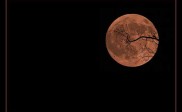How to capture a Time-Lapse
Time-lapse photography has gained immense popularity among photographers and filmmakers as it is a great way of adding texture, colors and feelings to visual productions. Time-lapse photography is very simple and beautiful. Time-lapses can be created instantly by following some basic steps. Here is a step-by-step approach to develop stunning time-lapses.
Choose Equipment
Some basic equipments that are needed for time-lapse photography include a camera, intervalometer, tripod and a camera attachment. You should preferably choose a DSLR camera as this will allow you to exercise greater control of the aperture and white balance settings. You should be mindful that the chosen camera has a portal to plug an intervalometer into it. An intervalometer is a simple device that helps to set frequency and duration of time for which the pictures will be taken. Using a tripod in the time-lapse setup will provide greater control, stability and ease in composing the time-lapse correctly. A tripod with heavy set legs should be preferred to enhance the stability. It is also advisable to carry spare batteries and a battery grip so that photographs can be taken for a longer period of time.
Setup and Composition
Attach your camera, with the intervalometer plugged in, to the tripod. You should try to capture the picture with as much potential movement as possible. The movement in pictures will create unique shapes and forms. You may want to capture sunsets and sunrises are these scenes are composed of beautiful color changes.
Adjusting Camera Settings
You should adjust the camera settings according to the duration for which you want to photograph and the desired length of video. The length of intervals will depend on the course of time you want to show and how fast you want your time lapse to be. By keeping shorter intervals, you can capture enough movement to make the time-lapse look fluid. However, when photographing a time-lapse over a longer period of time, the intervals may be set once every few minutes. If you want a slower time-lapse, you should capture more pictures in a set period of time. As there is limited space on a memory card, it is recommended that JPEG and not RAW format is chosen to take pictures.
Post Production
Once you have captured the images, it is time to process these time-lapse pictures. This can be easily done using Adobe After Effects. You will have to create a new composition at 1920 x 1080 and import the time-lapse images in chronological order. By clicking on the effect of color correction, you can adjust hue/saturation and perform simple color corrections to enhance/subdue saturation and contrasts. You can preview the time-lapse render and also watch it again in normal speed to be fully satisfied with the results. You can also use iPhoto and iMovie to adjust the overall colors and contrast of the clip.
Share Online
You may want to share your time-lapse photography with an ever growing online community of time-lapse enthusiasts on Vimeo and YouTube. This will help you win appreciation for your good work, while also provide a learning opportunity from others.



